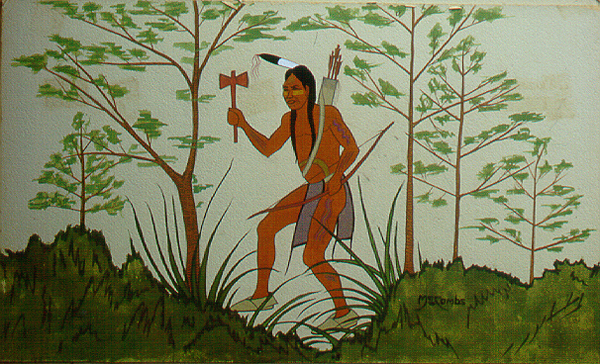Story 4: Coyote and the Origins of Death
In the beginning, death did not exist. Everyone stayed alive until there were so many people that there wasn’t room for anyone else. The chiefs held a council to determine what to do. One man arose and said that it would be good to have the people die and be gone for a little while, and then to return. As soon as he sat down Coyote jumped up and said that people ought to die forever because there was not enough food or room for everyone to live forever. The other men objected, saying that there would be no more happiness in the world if their loved ones died. All except Coyote decided to have the people die and be gone for a little while, and then to come back to life. After the council, the medicine men built a large grass house facing the east. They gathered the men of the tribe and told them that the people who died would come to the medicine house and then be restored to life. The chief medicine man said that he would put a large white and black eagle feather on top of the grass house. When the feather became bloody and fell over, the people would know that someone had died. Then all of the medicine men would come to the grass house and sing a song that would call the spirit of the dead to the grass house. When the spirit came to the house they would restore it to life again. All of the people were glad about these rules regarding death, for they were scared for the dead. After a time they saw the eagle feather turn bloody and fall and they knew that someone had died. The medicine men assembled in the grass house and sang for the spirit of the dead to come to them. In about ten days a whirlwind blew from the west, circled the grass house, and finally entered through the entrance in the east. From the whirlwind appeared a handsome young man who had been murdered by another tribe. All of the people saw him and rejoiced except Coyote, who was displeased because his rules were not carried out. In a short time the feather became bloody and fell again. Coyote saw it and at once went to the grass house. He took his seat near the door and sat with the singers for many days. When at last he heard the whirlwind coming he closed the door before the whirlwind could enter. The spirit in the whirlwind passed on by. Coyote thus introduced the idea of permanent death and people from that time on grieved about the dead and were unhappy. Now whenever any one meets a whirlwind or hears the wind whistle he says: "There is some one wandering about." Ever since Coyote closed the door the spirits of the dead have wandered over the earth, trying to find some place to go, until at last they find the road to spirit land.
After this day, Coyote ran away and never came back for he was afraid of what he had done. He always looked over his shoulder, afraid that someone was pursuing him. Since then he has been starving because no one will give him anything to eat. Medicine men play another important role within Caddo communities. They use their magic to protect and guide the people. Here again, we see the importance of roles played by animals. Animals give their powers to the medicine men who in turn use it for the good of the people. |
||
 |

|
